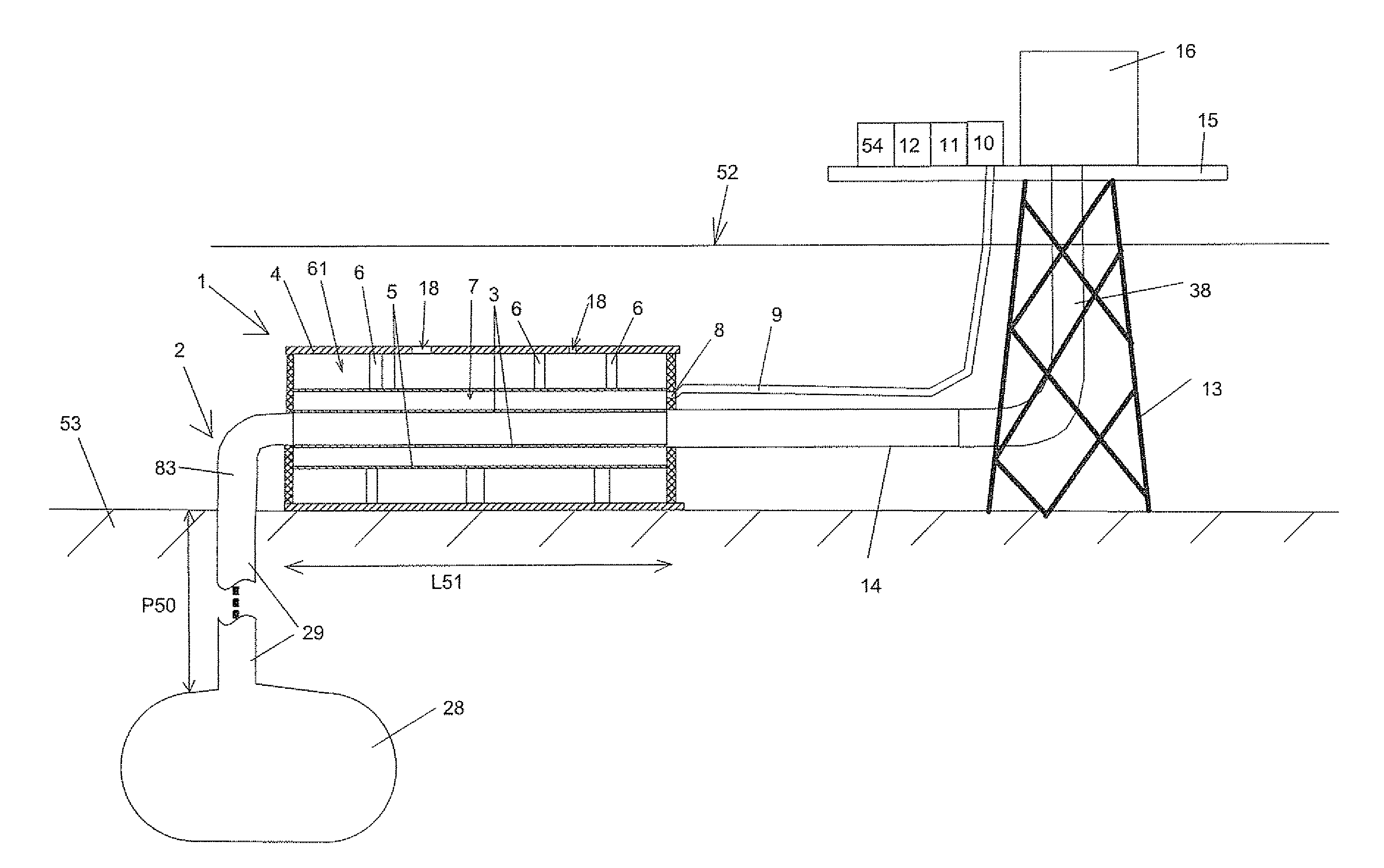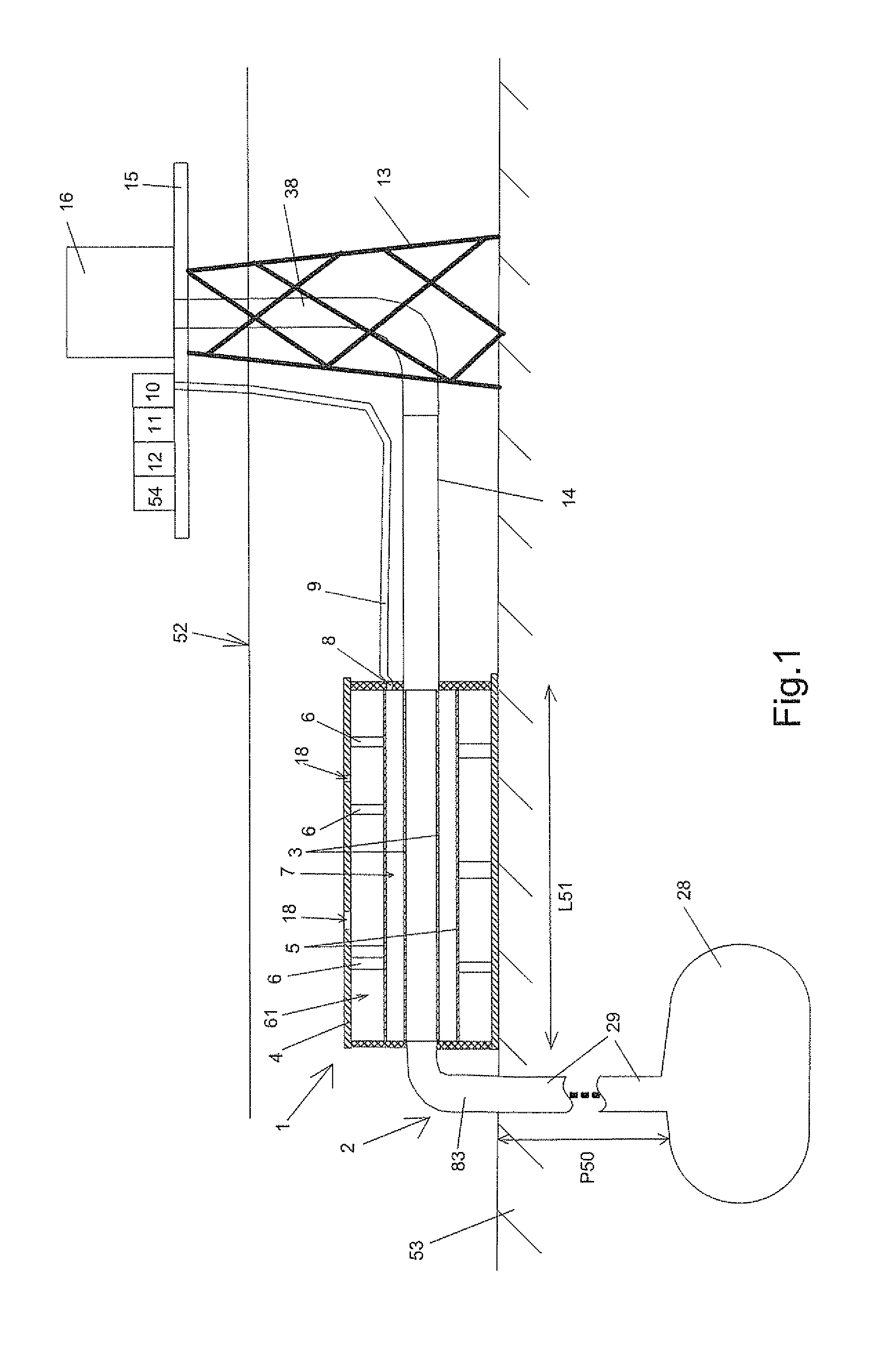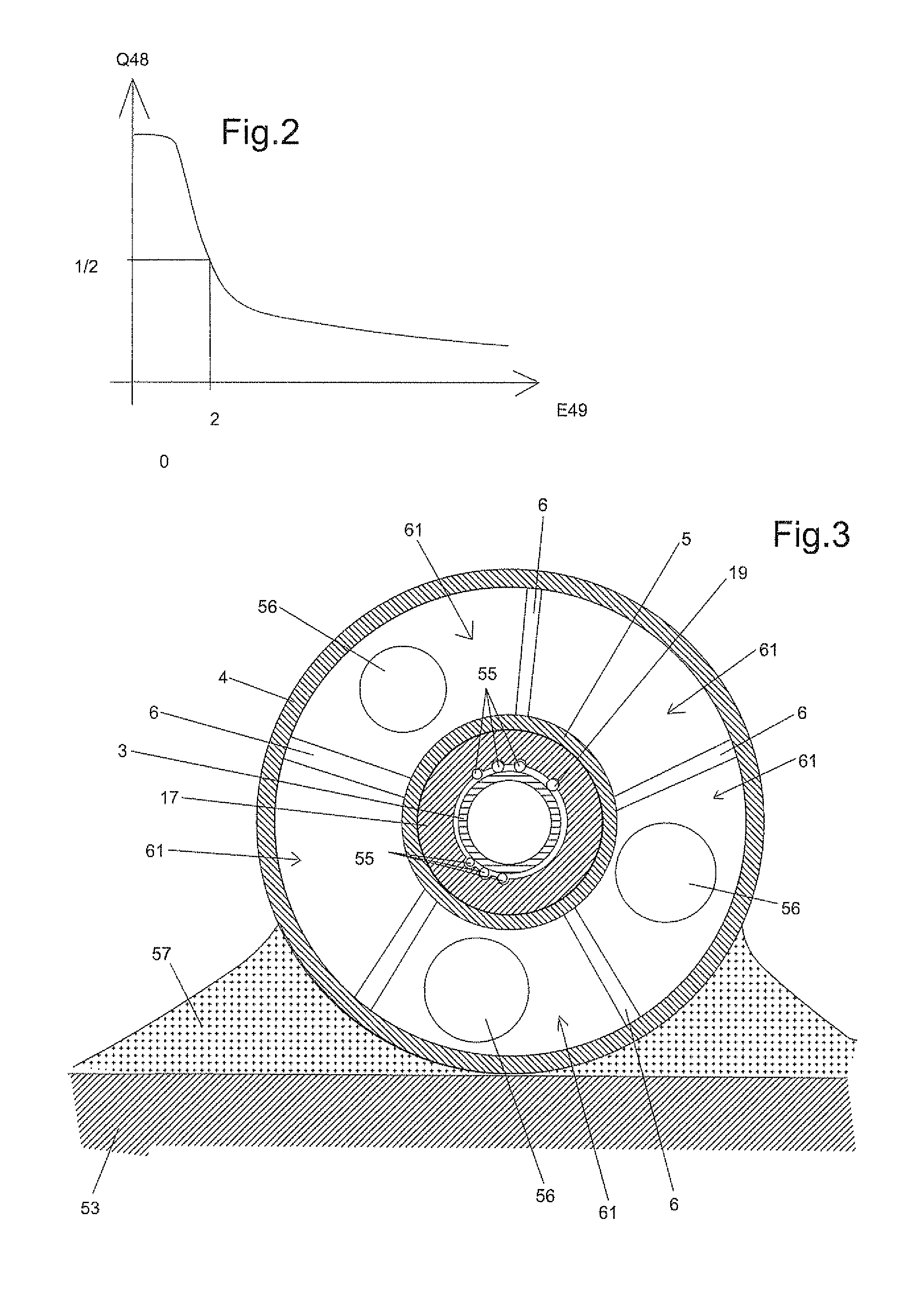Underwater hydrocarbon transport and temperature control device
a technology of temperature control device and hydrocarbon, which is applied in the direction of pipe heating/cooling, insulation, borehole/well accessories, etc., can solve the problems of additional force on the pipeline, inability to economically viable approaches, damage or destruction of electronic components, etc., and achieve simple and robust devices. high thermal power
- Summary
- Abstract
- Description
- Claims
- Application Information
AI Technical Summary
Benefits of technology
Problems solved by technology
Method used
Image
Examples
Embodiment Construction
[0049]FIG. 1 shows an immersed hydrocarbon transport device 1 arranged at the head of an extraction well 2. A deep pool of hydrocarbons is schematized by a pocket 28 to which access is made by a drill 29. The drill 29 is linked under water to the well head 2. The pool of hydrocarbons lies at a depth P50 of, for example, between 4000 and 8000 meters, or more. A well outlet pipe 83 links the drill 29 to the transport device 1. This pipe 83 is a classical pipe that does not, in itself, cause any significant change in temperature.
[0050]The transport device 1 according to the invention comprises a first pipe 3 into which the fluid arrives from the extraction well 2. A second pipe 5 is arranged around and at a distance from the first pipe 3. The first and second pipes 3 and 5 are held in relation to one another by assembly elements and form a pipe-in-pipe. An annular space 7 is arranged between these two pipes 3 and 5.
[0051]The pipe-in-pipe is arranged in an external protective casing 4. ...
PUM
 Login to View More
Login to View More Abstract
Description
Claims
Application Information
 Login to View More
Login to View More - R&D
- Intellectual Property
- Life Sciences
- Materials
- Tech Scout
- Unparalleled Data Quality
- Higher Quality Content
- 60% Fewer Hallucinations
Browse by: Latest US Patents, China's latest patents, Technical Efficacy Thesaurus, Application Domain, Technology Topic, Popular Technical Reports.
© 2025 PatSnap. All rights reserved.Legal|Privacy policy|Modern Slavery Act Transparency Statement|Sitemap|About US| Contact US: help@patsnap.com



